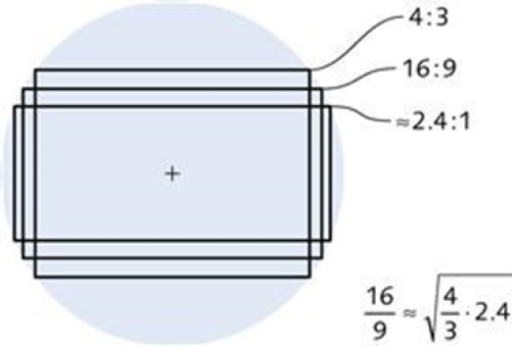Aspect ratio is simply the ratio of an image’s width to its height. It is also know as display aspect ratio(DAR) or picture aspect ratio (PAR). If the ratio of an image is different than the ratio of your screen, you may not see the whole image.
\begin{align*}
Aspect\ Ratio = \frac{width}{height}
\end{align*}Commonly used aspect ratios are
- 1:1
- 3:2
- 4:3
- 5:4
- 7:5
- 8.5:11
- 16:9

Widescreen
Widescreen refers to an aspect ratio wider than 4:3. High-definition (HD) television is standardized with an aspect ratio of 16:9. The choice of 16:9 aspect ratio for HD came about because 16:9 is very close to the geometric mean of the 4:3 picture aspect ratio of conventional television and the 2:4:1 picture aspect ratio of CinemaScope movies. Another way of expressing the 4:3 and 16:9 ratios is 1.33:1 and 1.78:1; however, these latter designations are used mostly for cinema formats, rather than TV.
Pixel Aspect Ratio
Pixel Aspect Ratio (PAR) describes the width and height of individual pixels. The size of the pixels determines the resolution of the screen. So, smaller pixels result in greater, more detailed screen resolution.
In the digital world, we use a square PAR because of the wide variety of screen sizes. If we used rectangular PAR, it would cause distortion.
